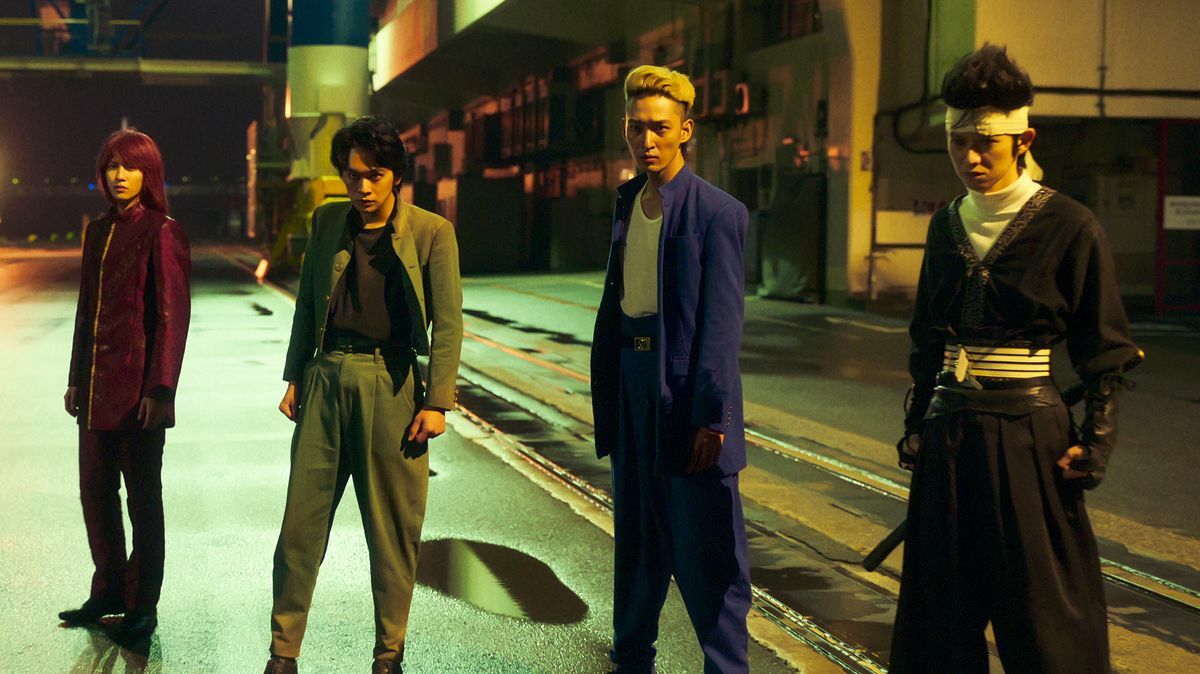Yu Yu Hakusho is spun from the collision of the Human and Demon World, setting the stage for different – at times, opposing – forces to meld into a beautiful contradiction. Take for instance, Yusuke Urameshi, the protagonist of Yoshihiro Togashi’s beloved classic who, with his fists of iron, delinquent reputation, and heart of gold, challenges the traditional hero archetype.

It’s apt characterisation for a series that dabbles in duality, and its shine has never dulled throughout the years. Serialised in the shonen manga magazine Weekly Shonen Jump from 1990 to 1994, it later received a 112-episode anime adaptation that first aired in 1992, with multiple cuts and dubbed versions released after.
But its presence remains strong, even as Yusuke’s adventures eventually came to an end. In more ways than one, Yu Yu Hakusho paved the road for another popular Togashi manga, Hunter x Hunter, which modern audiences may be more familiar with. Despite being entirely separate, the contemporary counterpart bears echoes of the former’s influence – stylistically, thematically, and otherwise.
Shaping one legacy is difficult enough, let alone two. Both IPs are well-loved in their own right, but Yu Yu Hakusho, coming in before the peak of the early-stage anime boom, didn’t have as wide of a reach as its peer. But just like how the series offers a bridge to two different worlds, Netflix is seeking to close the gap between the Western and anime-loving crowd through its live-action adaptation of the supernatural manga.
As with every adaptation, and more so for the live-action camp, the biggest challenge has always been to find a balance between creative liberties and faithfulness to the source material. The streamer’s five-episode Yu Yu Hakusho isn’t a beat-by-beat adaptation, but oozes charm through dynamic, thrilling action scenes, stellar visual effects, and personal interpretations of its characters – the beating heart of the original work.

For Takumi Kitamura, breathing life into Yusuke involved a careful study of the character in both the manga and anime.
“Of course, I tried to pay huge respect to the original. There were elements that I looked to [the manga] – for example, the way Yusuke walks and how much of a stride; I learned these physical elements from the manga. At the same time, Yusuke has a certain inflection in the animation when he speaks,” explained the young star in an interview with Geek Culture, of how he grasped the character’s behaviour and the nuances of voice-acting from the two portrayals.
That’s just one part of stepping into the role, however. The other half stems from the chemistry and sense of camaraderie forged during the filming process. “We created this sort of atmosphere when we were doing combat sequences or working together on-site,” added the 26-year-old.
“On stage, we were able to bring these ideas together and work together to create something even better. I think that’s really where the miracle happens.”
The blend of grounded techniques and special abilities plays further into the fantasy-reality dichotomy in Yu Yu Hakusho. While the original manga pivoted from occult detective fiction to the martial arts genre after a major turning point in the story, the live-action series goes full out in the visual effects department, from mutilating yokai to unleashing the Spirit Gun, Yusuke’s signature move.

It doesn’t hurt that they are a glorious sight to behold on the screen, too. Scanline VFX, known for their work on major Hollywood productions, worked to integrate special effects and CG character assets into the live-action stage via performance capture technology – all while using 170 cameras to simultaneously film the cast in 360 degrees.
The effort paid off handsomely, culminating into a visual delight that fits in nicely with the sleek, high-octane action. At the core of it, however, Yu Yu Hakusho remains an exploration about life, death, and being human, which is why Kitamura’s co-star Go Ayano made doubly sure to bring authenticity and a human touch to the table.
“It’s extremely important for all of us to be able to create something authentic through communication, through just being there at the filming location,” said the veteran actor, who plays antagonist Younger Toguro in Netflix’s live-action adaptation.

“For me, the most important element was how Takumi looked at me, his eyes, and the way he fights me, so I wanted to make sure those are consistent from the first episode all the way till the last.”
This commitment to the craft also reduces the reliance on post-production magic, allowing even more sincerity and raw expressions to shine through. “I think we always have to remember that CG isn’t the response to everything. We have to make sure that’s the performance part, so the actor’s part is extremely important,” he explained.
“This element of having the technology and performance co-existing throughout the story was something that Takumi did well, and I have a lot of respect for that.”
Ayano is hardly a stranger to the process himself. His character, after all, is a towering wall of muscle in the original manga, so he had to build his body to reflect some of that physique in the live-action Yu Yu Hakusho series. On top of the physical training, there were also specific movements that the star had to master, such as distorting his body and reacting to pain in the way that makes sense in the context of the fictional world.

Five years in the making (two in development, 10 months shooting, and over two years in post production), the dream has finally become a reality, serving as the meeting point for different mediums, interpretations, and generations of viewers. It’s a neat way to tie in many years of love and passion for one of manga’s greatest, and to keep its legacy going for even more decades to come.
“I’m from Tokyo, and within Tokyo, there’s this ward called Nerima, where all of us are really big fans of anime, so I think it’s cool to be at the forefront of anime culture,” summed Kitamura. “Yu Yu Hakusho really has a big presence throughout the history of manga, and I love it.”
Yu Yu Hakusho is now streaming on Netflix.













